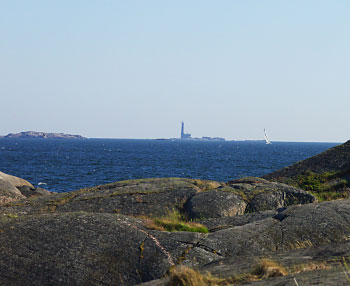The Baltic Sea – our sea
The Baltic Sea is the largest brackish water basin in the world. Its water is a mixture of salty ocean water and fresh water from numerous rivers and from rain and snow. The Baltic Sea has an area of 422,000 square kilometres and an average depth of 56 metres. It is connected to the Atlantic Ocean through the narrow and shallow Danish straits.
The Baltic Sea basin took shape billions of years ago when the continental blocks moved and the Fennoscandia bedrock was formed. It received its finishing touches when the last glacial period first pressed the earth crust down and the land then rose when the weight of the ice lifted.
The absence of tide and the long Nordic winters with ice formation are also typical for the Baltic Sea. All these factors have affected the evolution of its flora and fauna. The result is a biotic community characteristic of the Baltic Sea, where the combination of original seawater and fresh water species is unique in the world.
As all Baltic coastal states are industrialized countries, the sensitive nature of the Baltic Sea has been subjected to heavy pollution. The Baltic is often called the most polluted sea of the world – and not without cause.
In 1974, the Baltic coastal states signed the Helsinki Convention on the protection of the marine environment of the Baltic Sea area. It covers all sources of pollution and forbids the dumping of wastes into the sea. It also forbids pollution of the sea owing to research and exploitation of the seabed. According to the convention, protection of the Baltic Sea must not cause increased pollution outside the area covered by the convention.
To implement the Helsinki Convention, the signing states founded the Helsinki Commission (HELCOM), which works to protect the marine environment of the Baltic Sea. The Commission shall continually monitor the enforcement of the convention and by unanimous decisions give the governments of the contracting parties recommendations on details concerning the application of the convention. An international secretariat was established in Helsinki in 1980.
A revised and more binding protection convention was approved as part of the national legislation in the nine Baltic coastal states in 2000, when the new convention replaced the previous one and the convention area was extended to internal waters.
In spring 2002, the Finnish Government made its own decision in principle concerning measures for improving the state of the Baltic Sea and protecting the marine environment.
In 2001, the World Wide Fund for Nature (WWF) launched its own large campaign for the protection of the Baltic Sea, the Mermaid Operation. It offers all Finnish people the opportunity to support work for the Baltic and also act themselves for the benefit of the Baltic: ”Man needs the sea. The sea needs man” is the slogan of the Mermaid Operation.
In 2004, the IMO’s Marine Environment Protection Committee (MEPC) decided to designate in principle a large part of the Baltic Sea as a Particularly Sensitive Sea Area.
In their 5th Baltic Sea State Summit, held by the Council of the Baltic Sea States in June 2004, the Heads of Government welcomed the steps taken by the IMO to accelerate the phasing-out of single-hull tankers, and supported a ban on the carriage of heavy grades of oil in single-hull tankers to/from all the ports of the Baltic Sea no later than 5 April 2005 in accordance with IMO regulations. The Baltic Sea states have in several fora voiced their concerns over the traffic of such vessels.
A significant step towards safer and more environmentally friendly sea transport was taken when the GOFREP (Gulf Of Finland REPorting) mandatory ship reporting system began operation in the Gulf of Finland on 1 July 2004. There is heavy east/westbound traffic in the Gulf of Finland, as well as intense passenger traffic between Helsinki and Tallinn, involving some 6 million passengers a year. The rapid development of Russian oil exports has very much increased the number of vessels transiting the Gulf of Finland. A grounding or collision could cause loss of life or severe environmental damage to the vulnerable marine ecosystems.
Estonia, Finland and Russia jointly applied for the establishment of a mandatory Ship Reporting System and this was approved by the International Maritime Organization (IMO) in December 2002. The operation covers the international waters of the Gulf of Finland in a joint effort between the three countries. The Gulf of Finland Maritime District’s Vessel Traffic Service (VTS) centre in Helsinki is responsible for the Finnish part of the supervision task. The Gulf of Finland has been divided by mutual agreement into two monitoring sectors: Tallinn Traffic (Estonia) monitors the southern sector and Helsinki Traffic (Finland) monitors the northern sector. The eastern sector of the Gulf of Finland, which includes Russian territorial waters, is monitored by Russia. St. Petersburg Traffic will co-operate with the traffic centres in Estonia and Finland.
In Finland, the Finnish Institute of Marine Research, governed by the Ministry of Transport and Communications, is responsible for research in the Baltic Sea. It produces marine scientific information for use in decision-making and for practical needs. Research is primarily focused on the Baltic Sea but also includes the properties of polar seas. The general target is to form a basis for the understanding of natural history properties, with special focus on public requirements, such as shipping.
Links



